Sensible public transport: A post-pandemic dream
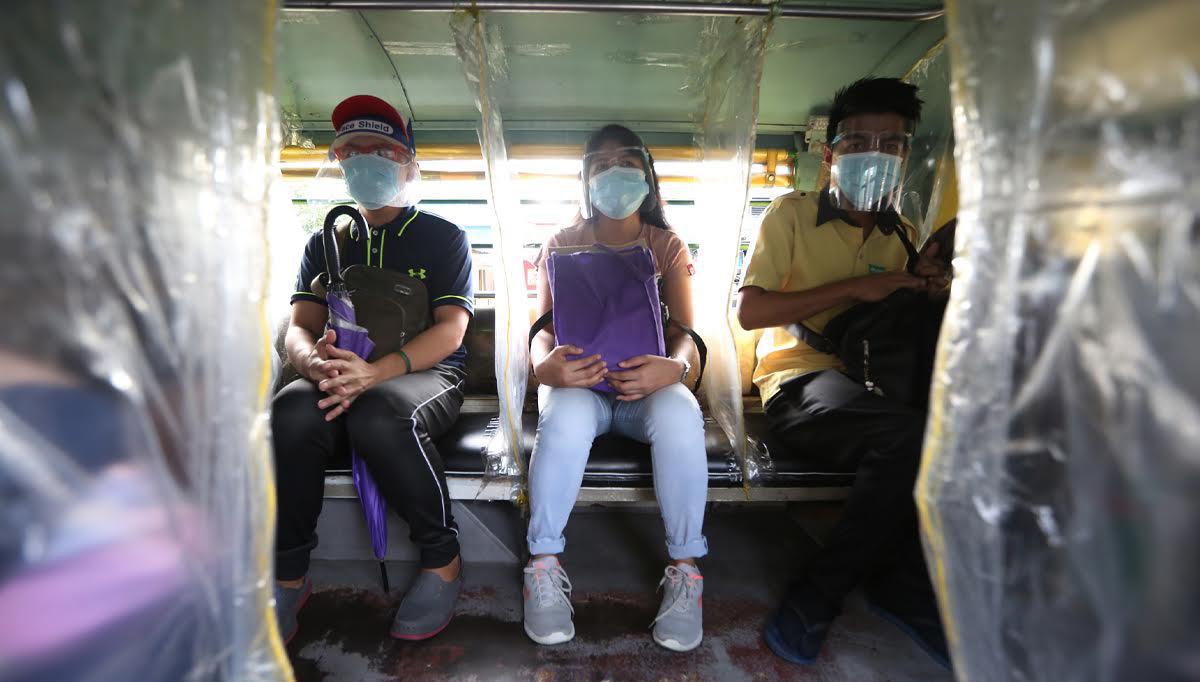
FILE PHOTO: Jeepney commuters in Makati City keep a measured distance between them after the government reduced the standard 1-meter rule for distancing on public vehicles. NIÑO JESUS ORBETA / Philippine Daily Inquirer
MANILA, Philippines—With 72 percent of Filipinos saying that they found it harder to get to work since the beginning of the COVID-19 catastrophe, plans being laid out by the government for public transportation are still up in the air.
The Social Weather Stations, in 2020, said 87 percent of Filipinos wanted the government to give weight to public transportation over private vehicles. Six percent said they “disagree” while seven percent were “undecided.”
ADVERTISEMENT
Benjamin de la Peña, chief executive officer of the Shared-Use Mobility Center, told
INQUIRER.net
that the government should “invest in public transportation,” saying that officials should have a plan.
READ:
Commuter woes worsen during pandemic
He said that if the government will not aspire to make public transportation efficient, completing “Build, Build, Build” projects will not make a difference in people’s lives, especially in the way people travel.
Drivers now required to take driver’s education upon license renewal – LTO
Marcos Jr’s ‘special diploma’ from Oxford: You can have it, too
Gordon to Duterte: You? Teaching me courtesy?
The group Move as One Coalition said that in Metro Manila, 70 percent of people rely on public transportation, but they only take up 22 percent of the space. Only 30 percent rely on private vehicles.
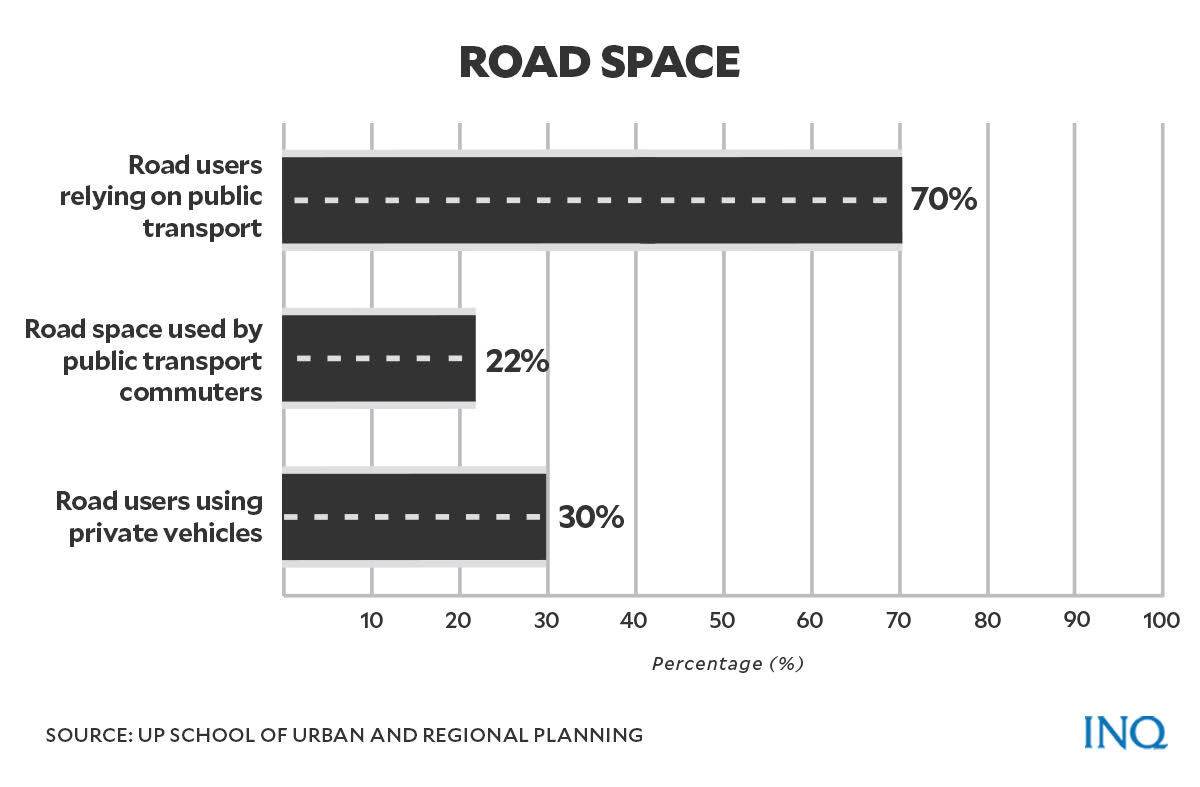
Graphic by Ed Lustan
De la Peña said that to improve public transportation in the Philippines, the government should have it “prioritized”. “We always see public transportation as a problem, yet we only invest limited resources,” he said.
Look at intensity
In his paper “Public Transport Rationalization as a means to Sustainability,” Dr. Cresencio Montalbo Jr. wrote that each day, 8,959,000 individuals ride public utility jeepneys (PUJ) while 1,865,000 people ride public utility buses (PUB).
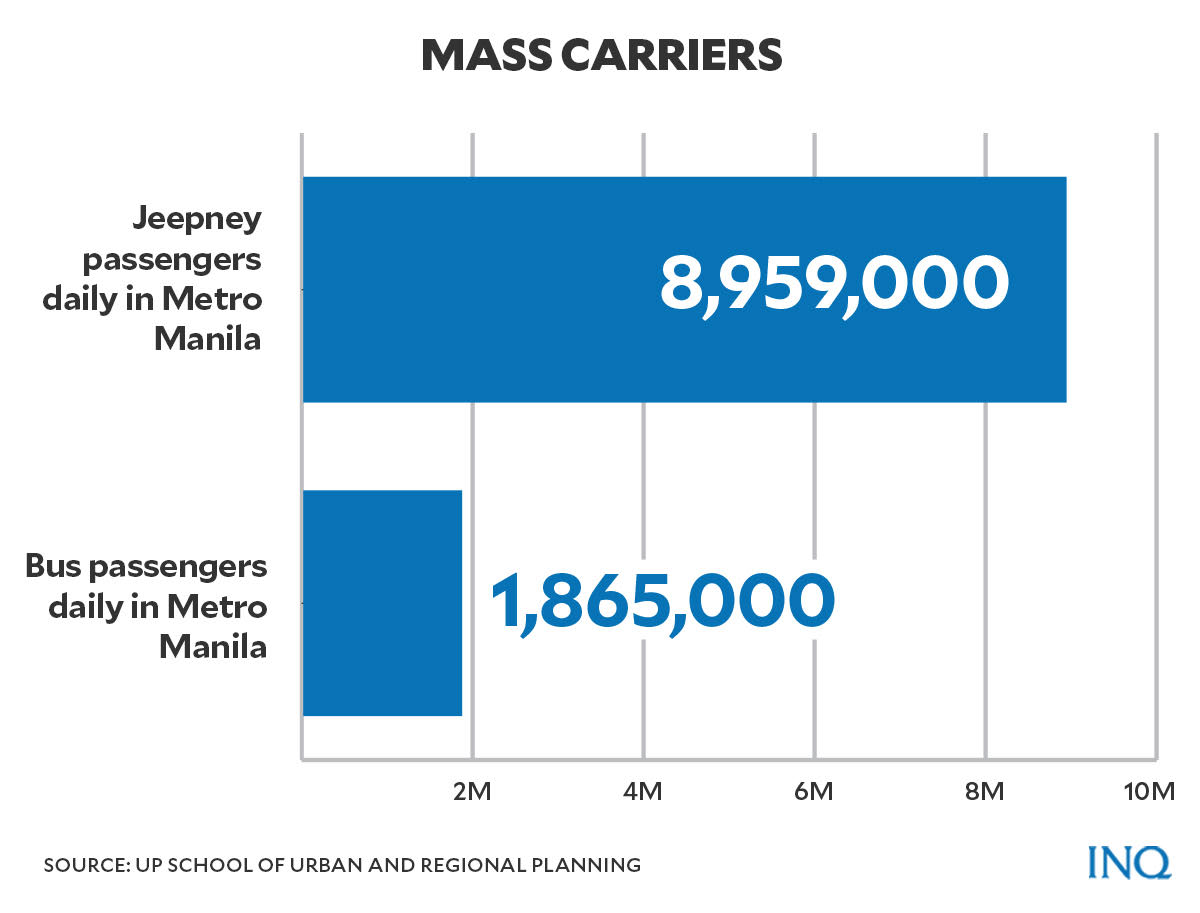
Graphic by Ed Lustan
Montalbo, who is part of the University of the Philippines’ School of Urban and Regional Planning, said that in Metro Manila, there are 677 PUJ routes with a length of 10.9 kms. There are 82 PUB routes with a length of 36.7 kms.
READ:
87% of Filipinos want gov’t priority on public transport, bikes over private vehicles
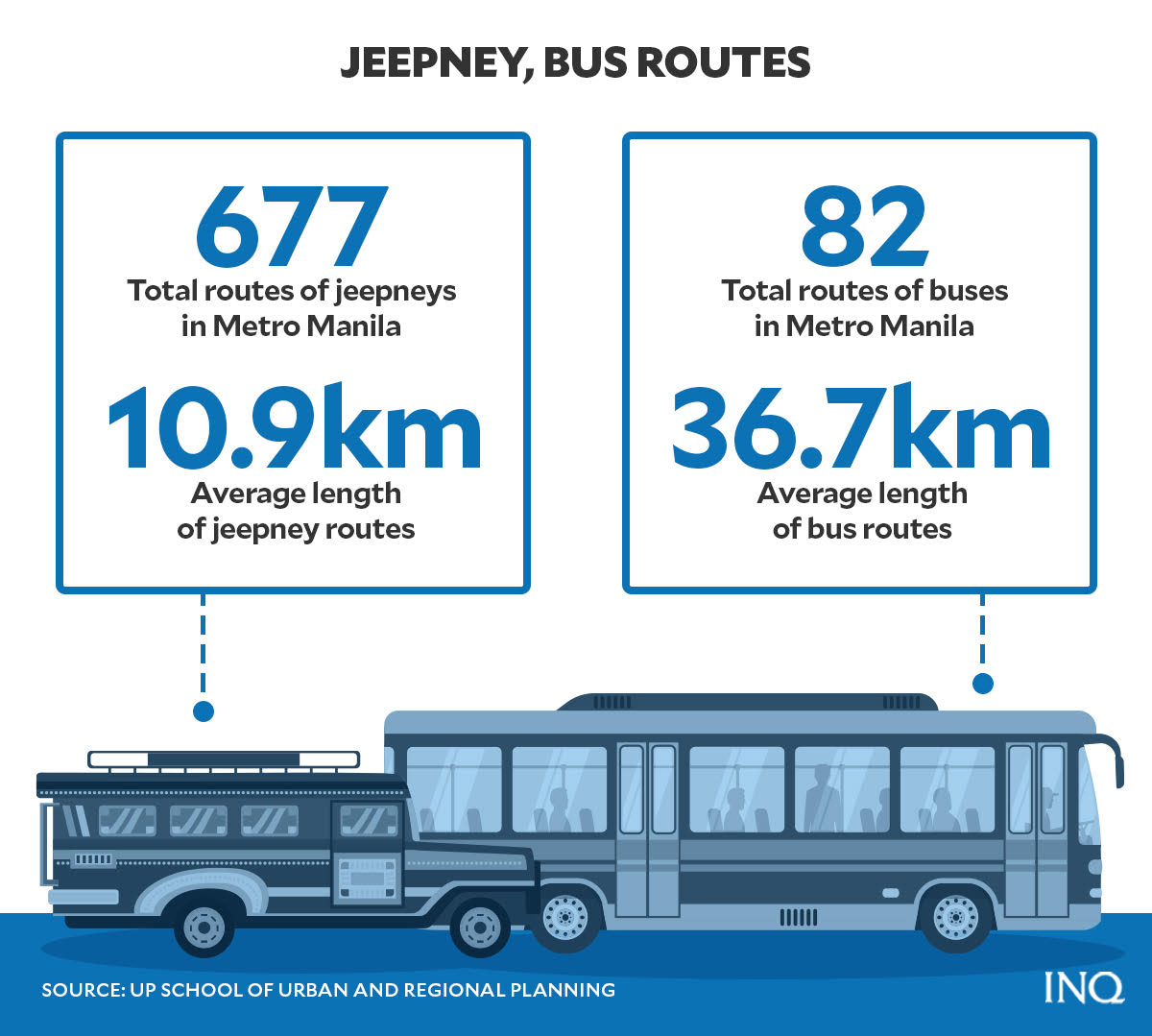
Graphic by Ed Lustan
Citing responses in 30,000 interviews with commuters, he said that the Sangandaan to Divisoria-Quiapo (213,861 passengers), Karuhatan to Ugong (150,736 passengers) and GMA to Alabang (140,441 passengers) routes were the three most heavily used by PUJs.
Graphic by Ed Lustan
The SM Fairview to Baclaran via Quezon Commonwealth (94,162 passengers), Grotto to Baclaran via Edsa Commonwealth (84,621 passengers), and Norzagaray Sapang Palay to Sta. Cruz via NLEx Sta. Maria (79,235 passengers) were the three most heavily used PUB routes.
ADVERTISEMENT
READ:
Commuter ‘misery’ gone? Group belies SONA boast
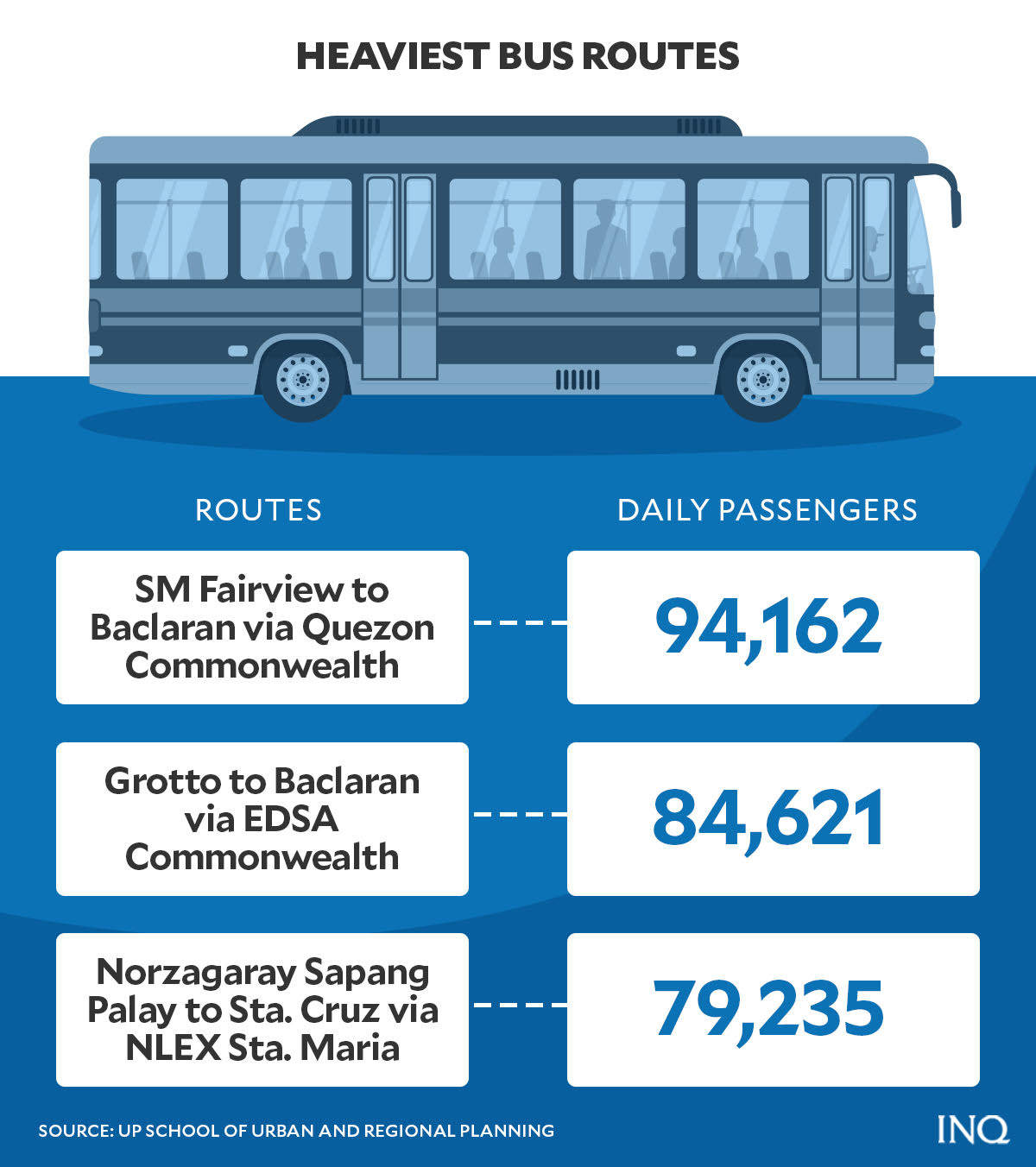
Graphic by Ed Lustan
These are the “hourly frequency” of PUJ and PUB services in Metro Manila throughout the day:
- 6 am to 9 am
PUJ (Inbound): 21.15
PUJ (Outbound): 20.45
- 5 pm to 7 pm
PUJ (Inbound): 16.98
PUJ (Outbound): 17.69
- 6 am to 9 am
PUB (Inbound): 9.93
PUB (Outbound): 9.49
- 5 pm to 7 pm
PUB (Inbound): 8.29
PUB (Outbound): 8.82
These are the average “vehicle occupancy” of PUJ and PUB services in Metro Manila throughout the day:
- 6 am to 9 am
PUJ (Inbound): 12.17
PUJ (Outbound): 9.55
- 5 pm to 7 pm
PUJ (Inbound): 10.24
PUJ (Outbound): 14.56
- 6 am to 9 am
PUB (Inbound): 46.36
PUB (Outbound): 27.53
- 5 pm to 7 pm
PUB (Inbound): 36.41
PUB (Outbound): 57.11
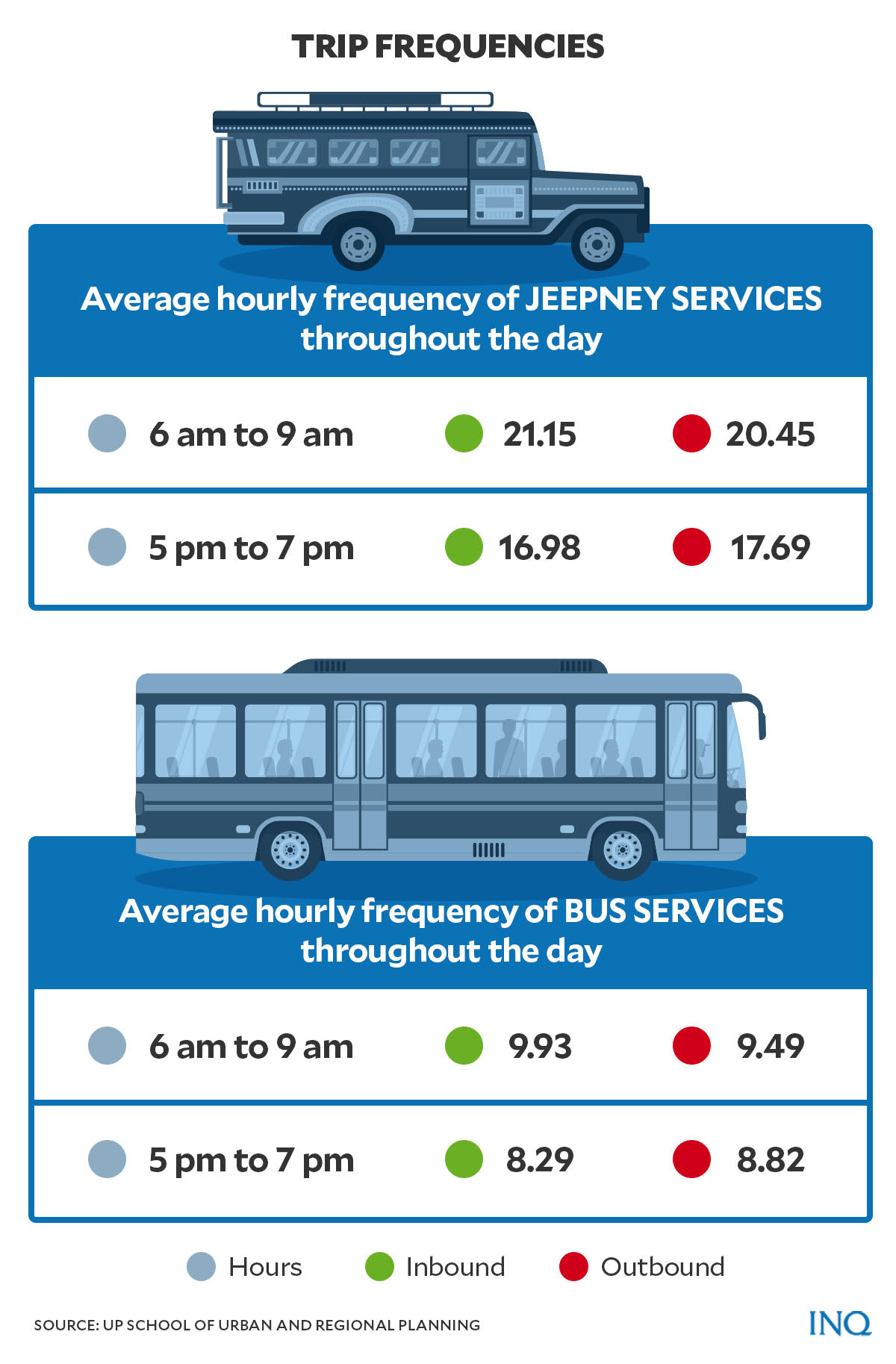
Graphic by Ed Lustan
Montalbo said he wanted to develop an “integrated public transport system” that would enable the efficient movement of people in Metro Manila through an “ecologically sustainable travel” that was cost effective.
To have his goal realized, he proposed a “16 mass transit trunk-feeder routes linking areas of highest demand, creating [a] network of transit routes [and] strong interchange between routes.”
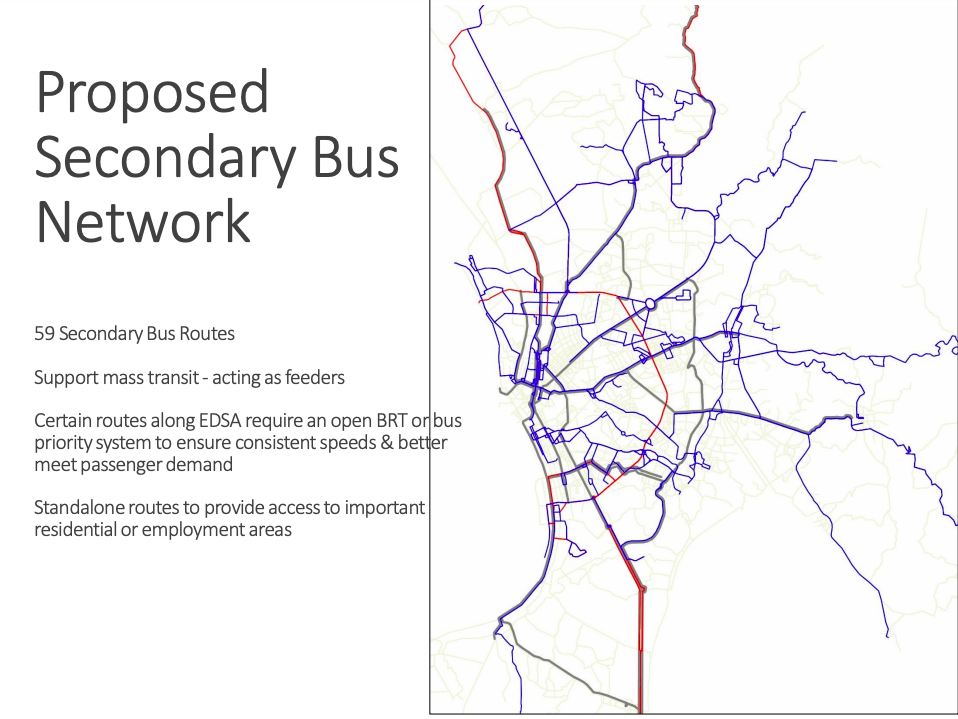
GRAPHIC FROM UP SCHOOL OF URBAN AND REGIONAL PLANNING
He also proposed 59 secondary bus routes that will back mass transit. The proposal included standalone routes to provide access to important residential and employment areas in Metro Manila.
When Montalbo wrote the report, there was no government-led planning on the road transit network.
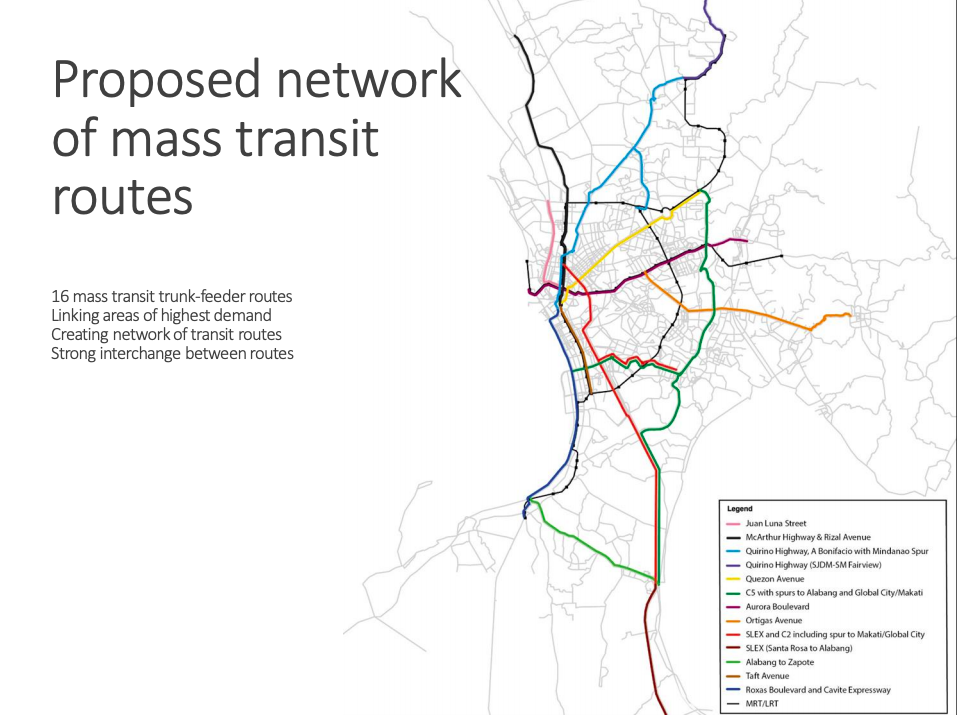
GRAPHIC FROM UP SCHOOL OF URBAN AND REGIONAL PLANNING
De la Peña said the thinking of transportation policy makers and leaders was “not integrated,” explaining that paths should have been connected from the very beginning.
Shortage
The Move as One Coalition said that by 2030, the “transport supply shortage” in Metro Manila will be as high as 2.8 million “daily passenger trips” even if the Build, Build, Build program was completed “on time.”
The coalition, which calls for “sustainable mobility”, explained that it was because only 2 percent of the P2 trillion program pipeline was dedicated to “road-based public transport investments.”
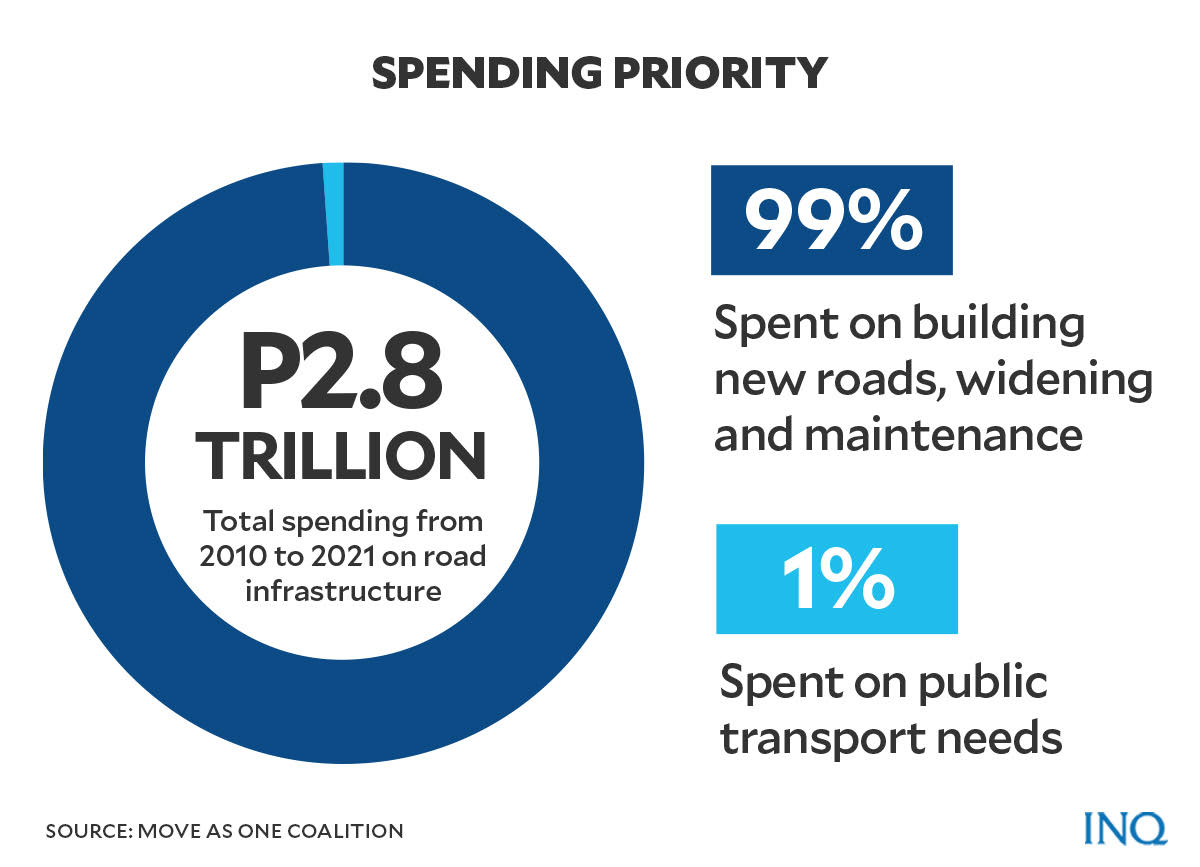
Graphic by Ed Lustan
In the Philippines, a bus has a minimum of 25 seating capacity while jeepneys can carry 20 passengers. A car is a vehicle with a maximum seating capacity of five, including driver.
“We should invest in more active and road-based public transportation infrastructure [because these are] built much faster at far less cost per person–km,” the Move as One Coalition said.
These are the cost of transport modes in pesos per person-km over “project useful life”:
- Sidewalk: P0.01
- Protected bike lanes: P0.08
- Bus Rapid Transit: P1.51
The Transformative Urban Mobility Initiative said that compared with car-only lanes, PUV-only lanes enable roads to carry up to 29 times more people, cycling lanes up to 8 times more people, and walkways up to 10 times more people.
‘Biyahenihan’
The Move as One Coalition said that “we need a better balance for a better normal,” explaining that there’s a need to “move towards a public transport that is safer, more human and more inclusive.”
READ:
New strategies urged to improve public transport
From 2010 to 2021, 99 percent of P2.8 trillion “road-based infrastructure budget” went to road construction, widening and maintenance while only one percent (P40 billion) went to road-based public transport.
The group said there are available revenues to fund better public transport, especially because the government collected almost P2.1 trillion in road-based transport revenues from 1997 to 2018.
Asking for a “people-centered budgeting,” the group proposed a P150 billion “Biyahenihan budget” to improve road-based public transport and active transport which consists of these:
- Service contracts (jeeps, buses, fare cards)
Actual 2020 to 2021 budget: P8,600,000,000
Move as One’s proposal: P75,840,000,000
- Active Transport (protected bike lanes, safe pathways, at-grade crosswalks)
Actual 2020 to 2021 budget: P1,666,000,000
Move as One’s proposal: P14,230,000,000
- Road-based public transport infrastructure (PUV Modernization Program, PUV-only lanes, bus stops, terminals)
Actual 2020 to 2021 budget: P2,128,845,000
Move as One’s proposal: P60,410,000,000
RELATED STORY:
We have taken away the misery of public commuting — Duterte
TSB
Subscribe to our daily newsletter
Read Next
In her return to Bicol, Robredo gets support from two more local execs
EDITORS’ PICK
MOST READ
Don’t miss out on the latest news and information.
View comments


